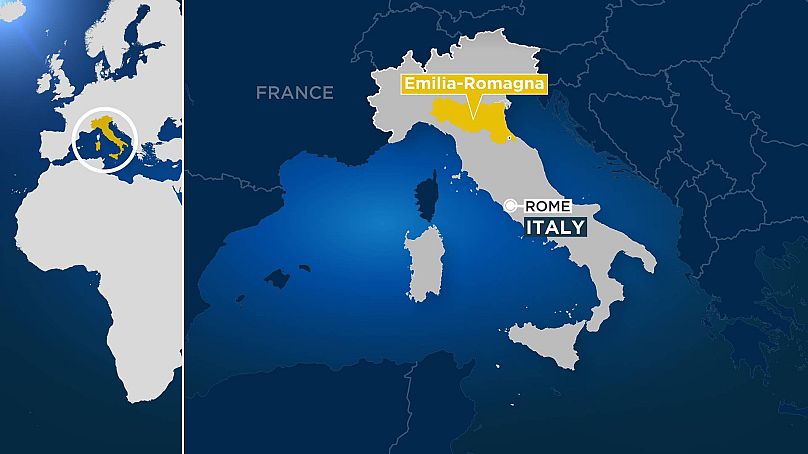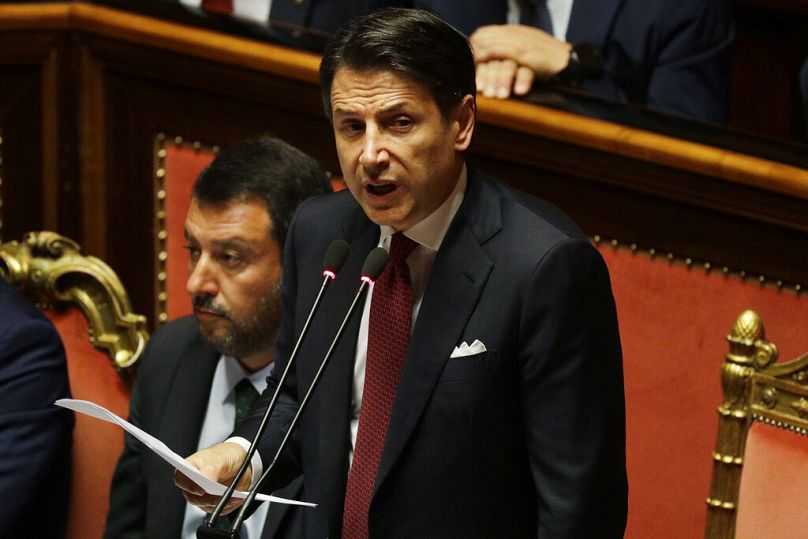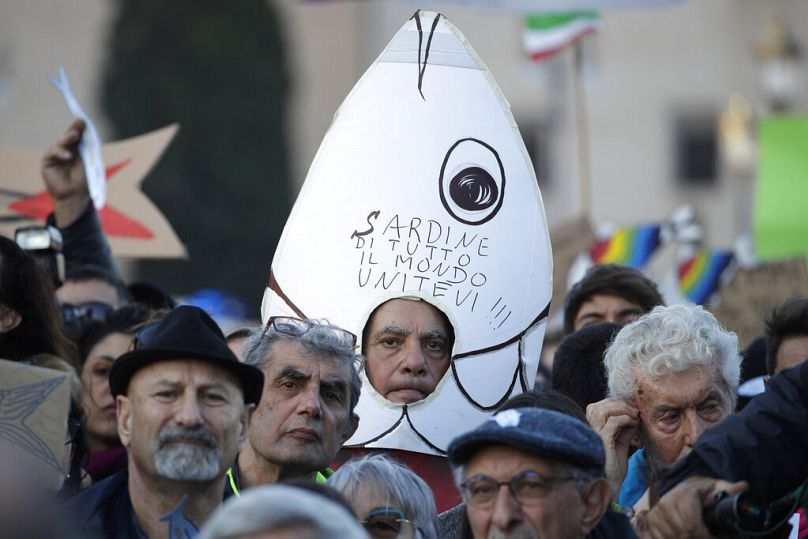Sunday could see fatal cracks appear in Italy’s coalition government. Here’s how.
What’s happening?
The northern Italian region of Emilia-Romagna is staunchly leftist but Matteo Salvini and his centre-right coalition are threatening a political earthquake that could tumble the national coalition government and return him to power.
What’s the background?
Emilia-Romagna — which includes the cities of Bologna, Parma and Modena — is known as the red region of Italy.
It has long been a stronghold of the left, from the Italian Communist Party to its successors like the Democratic Party.
Left-leaning parties have won every regional election since 1970, often with a 20% cushion over the next largest party.
But this time it’s going to be neck-and-neck, according to projections. A poll at the end of December gave incumbent Stefano Bonaccini, of the Democratic Party, 28.5%, behind his rival, Lucia Borgonzoni, from Salvini’s League party, on 30%.
Both are standing within left- and right-leaning coalitions. A poll on 9 January put Bonaccini’s centre-left group on 47%, with Borgonzoni’s centre-right alliance trailing just behind 45%.
“Traditionally, the Emilia Romagna was a safe region for the left, so actually it didn't attract a lot of attention in the past, because people took it for granted,” Davide Vampa, a lecturer in politics at Aston University, told Euronews.
“But this time, it seems that the race is very close and the centre-right, which is dominated by Salvini, could win the election.
“That's why it's so, so important. It's a symbol for the centre-left and if they lose on Sunday, that's a political earthquake.”
Why would a centre-left defeat rock the national government?
Italian politics is notoriously unstable: the current government is the country’s 67th since World War II. That equates to, on average since 1946, a new administration every 12 or 13 months.
Italy’s last election in March 2018 saw left-leaning populists Five Star Movement finish as the biggest party. After weeks of stalemate, they got into bed with a populist at the other end of the political spectrum, Salvini, and his far-right League party, to form an unlikely coalition government.
More than a year on — after Salvini’s League party won the European elections and Five Star floundered — cracks began to show, with Prime Minister Giuseppe Conte calling on both parties to stop squabbling.
Later in the summer, Salvini, buoyed by polls and election results, said Five Star was no longer a credible partner. He called for elections in the expectation his party would win and he would be installed as prime minister.
But he was outmanoeuvred by Five Star Movement and the Democratic Party, who ousted Salvini and formed a new governing coalition in August last year.
Yet, already, the foundations are looking shaky: Luigi Di Maio, leader of the Five Star Movement, quit this week as his party shed support over its recent coalitions with League and the Democratic Party.
Vampa said if the Democratic Party lose on Sunday it could prompt its MPs to worry that governing with Five Star Movement is harming its electoral chances, possibly leading to the collapse of the coalition.
“As you know, Italian politics is very unpredictable,” he said. “I think there will be some problems. It might not lead to the immediate collapse of the government. But this defeat would definitely weaken the national government. Then, in the medium to long term, that might lead to the collapse of the coalition.”
Why is the centre-left under threat in Emilia Romagna?
Vampa told Euronews there was a broad consensus that Bonaccini — the president of the Emilia-Romagna region, who is standing for re-election — had done a good job.
He said it was interesting the incumbent Democratic Party were therefore under threat, especially in a traditionally left-leaning area.
“It shows there is a kind of impact of national dynamics on the regional arena,” Vampa said.
“It's quite interesting to see Salvini and not the leader of the centre-right is leading the campaign in Emilia Romagna.
“So Salvini is trying to use national themes to win in a region where the left has actually governed in a good way.”
But it’s not all about Salvini. There are several other traditionally left-leaning regions across Europe that have shifted to the right, such as northern regions of England and Andalusia in Spain.
“I think it's a general phenomenon that we can see in Europe, of political dealignment,” Vampa continued.
“Voters in the past used to be more faithful to the political parties of their families. There was a long tradition of voting for the left because your family voted for the left. Political parties were more able to control their voters and the electorate.
“Today, voters are much more mobile, and they change their preferences much faster, that might be due to the fact that political communication has changed and the role of social media.”
“Also, in Italy, there has been a general trend in the weakening of party organisation, which is also linked to the issue of social media
“In the past, for example, the Democratic Party and the Communist Party were very strong organisationally in Emilia Romagna. So they were able to control the votes on the ground. Now, this does become more difficult.”
Where do the ‘Sardines’ come in?
A new movement has sprung up in the region to oppose Salvini and they are having impressive results.
They are called “Sardines” because their rallies see supporters pack tightly into Italian squares likely the oily fish in a tin.
The grassroots group was founded over lunch by four former roommates, all in their 30s, who were fed up with the abrasive, nationalist rhetoric of Salvini.
“It seems for the last five years that no politician was able to contrast Salvini, his rhetoric and his approach to politics,” said Vampa.
“And the ‘Sardines’, for the first time, spoke in a very clear way to a broad audience, with some very clear slogans
“Salvini is an effective politician, but he’s a very polarising figure. So there are a lot of people who love him, but there are also a lot of people who hate him. And the ‘Sardines’ have been able to capture the support of those people.”
The “Sardines” turned to one of Salvini’s strengths — a social media campaign — to get people together in Bologna’s central Piazza Maggiore and rival one of his rallies organised in the city last year.
They were expecting 6,000 people to show up in the pouring rain.
Instead, 15,000 packed the piazza like, well, sardines, and a new political movement was born.
Salvini will no doubt be wishing they are very much more reticent about participating on Sunday.














